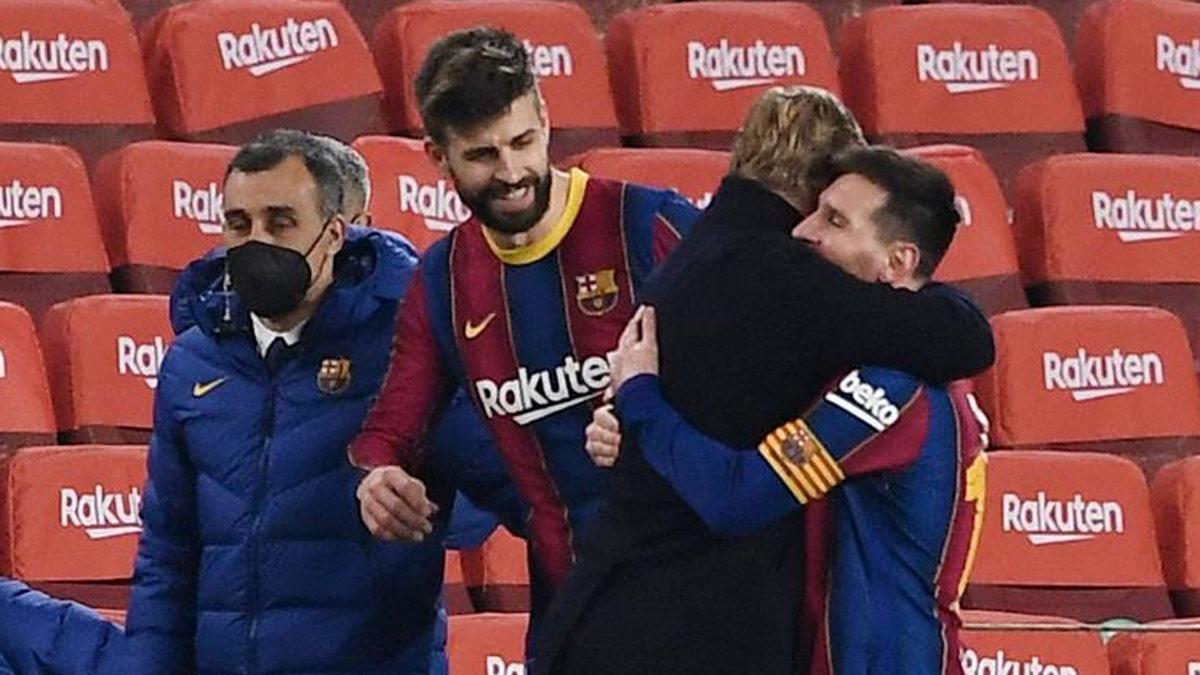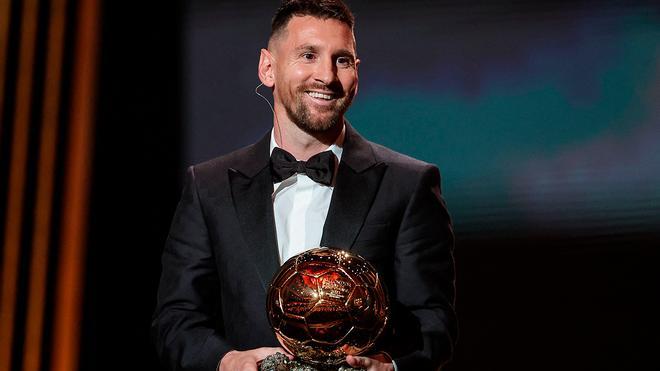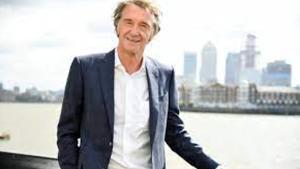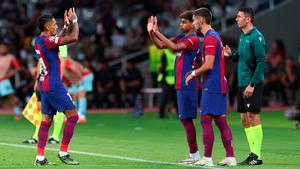Ronald Koeman and how Barca got it together again
The coach has played a big role in the team's surge in 2021
“I’m sure there are things that happen because they are guided from above.” Even the more rational types sometimes suspect there are things that don’t make sense. Including Ronald Koeman, who doesn’t take his feet off the floor. He said that about his big decision, coming back to coach Barca after various failed attempts to.
The offer arrived when he had just got a new flat in Pedralbes. The phone rang after he had decided with his wife Bartina to spend more time in Barcelona.
While Barcelona lost 8-2 in Lisbon, Koeman was decorating his new house. He had suffered a heart problem months before, which reminded him the fragility of everything. He was taken to hospital after doing 96 kilometres on his bike. And in 2019 Bartina had a small breast cancer relapse. Both overcame the coronavirus.
All that changed his perspective on things. Edwin Winkels, a Dutch journalist who knows the coach, explained it.
“After all he lived through, when the Barca proposal arrived he thought, ‘it’s time to take the chance and not think about it too much’. It was the moment to take the path he always wanted to go on.”
Koeman knew where he fit in and what the club’s plans were. To start changing the guard, including making decisions over uncomfortable matters, like Suarez’s exit.
Counting on Messi, knowing that Suarez had to go and leading the reconstruction. For that, he brought in Shredder and Larsson as assistants.
Koeman looked further away because he did not want to dismantle the Holland technical team. Schreuder was Ten Hag’s No 2 at Ajax and they had met months earlier in Ibiza on the beach. They clicked. Koeman told him he would think of him in the future. He didn’t know Larsson but they share an agent and Koeman thought he had an interesting profile and would be able to connect with the players. They are very calm, in contrast to Setien’s assistants.
Schreuder detected that Barca last season fell apart in second halves. There was a physical problem, an issue with their intensity. So they changed how training worked.
Rondos were dropped as the first exercise, instead there were more personalised sessions and players worked harder outside of hours.
They also didn’t want to overload players with too much information, something that caused problems under Setien. The first step was recovering intensity in training sessions. The other, gaining the confidence of the players over time.
Starting with Messi, giving him space after the disappointment of the summer. The Argentine appreciated that the technical team are direct and honest. They do what they say and don’t trick anyone.
The chemistry of the group grew from the moment that Messi lifted his head after months of frustration. But until that moment, the results didn’t arrive and Koeman was insisting on a 4-2-3-1 that did not bring results.
These were months in which Koeman’s family preferred not to watch the games, as explained in the documentary ‘Forca Koeman’, which came out in Holland a couple of weeks ago.
They were months in which the coach lamented a lot of individual errors in both boxes. The defeat against Juventus was a turning point.
Koeman spoke with his players and shifted to a 4-3-3, which the team had some muscle memory of. He did not stop there. He tried a system with three centre-backs and two advanced full backs, which gave the team better defensive structure and allowed them to press higher and play better together.
Koeman has taken on ‘sacred’ questions like the club’s style with a lot of naturalness. Without wanting to be what he is not, or apply what he doesn’t believe in. In his first season he has showed he’s less militant about the Cruyff idea, but that he shares with him his interest in integrating some things in place where they belong.
“There are different types of Dutchman,” explained Winkels. “Some like Van Gaal who go away and expect the world to adapt to them. Then others like Cruyff and Ronald, who have their ideas and defend them, but know they have to adapt to where they go.”
Koeman has helped improve players like De Jong, Pedri and Ousmane Dembele. And intermittently, Antonine Griezmann.
Those who know him say he’s never spent so many hours working. It’s usual to see him in early even after getting back late at night from away tips. Having waited for so long for this chance, he doesn’t want to waste a moment of it.
Koeman has needed to lean on youngsters with the club unable to bring in players he hoped for. It has been a valiant bet regardless and he has to look for a balance. Create Barca players for the future but keep competing. It’s a process but he’s helping the kids increase their confidence.
LATEST EPISODE OF THE BEST FC BARCELONA PODCAST IN ENGLISH
“Koeman looks at character a lot and the attitude people have. In the Dutch culture it’s always been more habitual to give time to youngsters. And he’s doing it when everyone was talking about a La Masia in drought and unable to sign players,” say people close to Koeman.
Despite improving the team, Koeman is still creating debate in some areas. Some believe he’s the best coach possible to start the reconstruction but other better options for the future itself.
His tactics and substitutions have been suspect. But it’s harder to criticise his generosity in the reconstruction. He depends on results but he is investing in the future. In Pedri, Araujo, Ilaix, Mingueza, Ansu and Co, without losing the plot in the league. Barca are alive in that and in a cup final. They stopped the Champions League smashings too. They don’t have titles yet but their biggest win has been bringing Barca fans back to believe in the club.
To understand Koeman’s character you have to remember how he shot penalties. How he kept his composure even on the Dream Team’s worst nights. His way of being has made him the best spokesperson for the club in complicated months. With elections, institutional issues, etc, he knew how to send a realistic, calm message, with no drama.
He has also been critical when needed, sometimes singling out a player, sometimes the club as a whole. But in the hardest moments his discourse has reinforced the image of the club. With Laporta’s arrival as president, he can focus on just being a coach.
Topics with the letter






